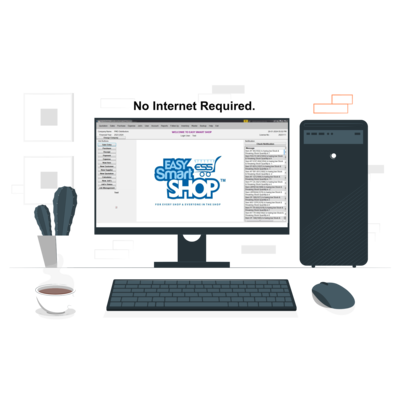Job Work Management Software: Simplify Your Shop Operations with Easy Smart Shop
In today’s fast-paced business environment, it’s crucial to have efficient and streamlined processes in place to stay competitive. For shops that handle job work, managing tasks, tracking progress, and ensuring timely delivery can be a daunting task. This is where a reliable job work management software like Easy Smart Shop comes into play.
What is Job Work Management Software?
Job work management software is a digital tool designed to help businesses streamline their job work processes. It provides a centralized platform where you can manage and track all your job work tasks, from receiving orders to assigning them to the right team members, monitoring progress, and delivering the finished products.
Easy Smart Shop is one such software that offers a user-friendly interface and a wide range of features to simplify your shop operations.
Key Features of Easy Smart Shop
1. Order Management: With Easy Smart Shop, you can easily manage and track all your job work orders in one place. You can create new orders, assign them to specific teams or individuals, and set deadlines for completion. The software also allows you to generate invoices and track payments.
2. Task Assignment: Assigning tasks to your team members becomes a breeze with Easy Smart Shop. You can allocate specific tasks to individuals, set priorities, and track their progress. This ensures that everyone is on the same page and helps avoid any confusion or delays.
3. Real-Time Progress Tracking: Stay updated on the status of each job work task with real-time progress tracking. Easy Smart Shop provides a visual dashboard where you can see the progress of each order, identify bottlenecks, and take necessary actions to ensure timely completion.
4. Inventory Management: Keep track of your stock levels and ensure that you have the necessary materials for job work. Easy Smart Shop allows you to manage your inventory, set reorder points, and generate alerts when stock levels are running low.
5. Communication and Collaboration: Effective communication is vital for successful job work management. Easy Smart Shop provides a built-in messaging system that allows team members to communicate, share updates, and collaborate on tasks. This eliminates the need for multiple communication channels and reduces the chances of miscommunication.
6. Reporting and Analytics: Easy Smart Shop offers comprehensive reporting and analytics features. You can generate reports on various aspects of your job work, such as order status, productivity, and profitability. These insights help you make data-driven decisions and identify areas for improvement.
Benefits of Using Easy Smart Shop
1. Improved Efficiency: By automating and streamlining your job work processes, Easy Smart Shop helps you save time and reduce manual errors. This leads to improved efficiency and productivity in your shop operations.
2. Enhanced Communication: With a centralized platform for communication and collaboration, Easy Smart Shop improves internal communication among team members. This leads to better coordination and faster resolution of issues.
3. Timely Delivery: By providing real-time progress tracking and task assignment features, Easy Smart Shop helps you ensure timely delivery of job work orders. This enhances customer satisfaction and builds trust in your business.
4. Cost Savings: Effective inventory management and reporting features in Easy Smart Shop help you optimize your stock levels, reduce wastage, and minimize inventory holding costs. This translates into cost savings for your business.
5. Scalability: Easy Smart Shop is designed to grow with your business. Whether you have a small shop or a large enterprise, the software can adapt to your needs and accommodate your expanding operations.
Conclusion
Managing job work can be complex, but with the right tools, you can simplify your shop operations and improve overall efficiency. Easy Smart Shop offers a comprehensive job work management software solution that helps you streamline tasks, track progress, and ensure timely delivery. By leveraging the features and benefits of Easy Smart Shop, you can take your shop operations to the next level.








